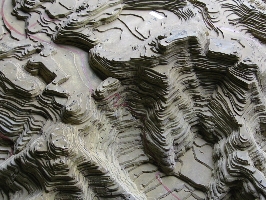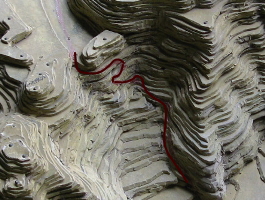Areas: Okamoto (岡本) and Tamanawa (玉縄)
Place Name
Place Name Okamoto covers some of the areas to the west of Ofuna Station. The "Oka" in Okamoto means a hill and "moto" means, literally, "at the foot of." Geographically, the area is at the foot of plateaus on which the neighboring areas of Sekiya (関谷), Shiromeguri (城廻), Ueki (植木), and Tamanawa are located.The "Tama" in Tamanawa means "ornamental bead" and the "nawa" means "a thread or a string for connection." It is thought that people lived here in ancient times because beads with strings have been found buried here; hence the name, Tamanawa.
| Ofuna Kannon (大船 観音) |
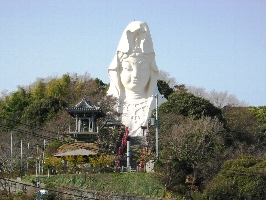
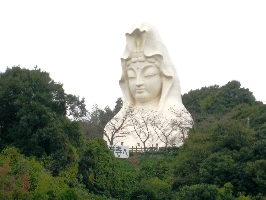
Full name: Butsukaisan (仏海山) Ofuna Kannonji (大船観音寺)
Denomination: Soto Zen sect (曹洞宗)
Location: Located near to the west of JR Ofuna Station
History: Construction of the statue began in 1924 as a prayer for world peace, but was suspended due to a shortage of funds.
It was restarted in 1954 under Takashina Rosen (高階瓏仙), head priest of Eiheiji Temple (永平寺) of the Soto sect (曹洞宗) of Buddhism, with the united efforts of many eminent people.
The statue was completed in 1960, and the Soto sect re-established the temple in 1981, calling it Ofuna Kannonji.
Grounds; A huge statue of Kannon rises from the top of the hill to the west of Ofuna Station. The gentle and merciful expression attracts the faithful, passersby, and even the eyes of passengers aboard the nearby trains.
The hill is named Mugasozan (無我相山) but is popularly called Kannonyama (観音山). At the end of the long and steep slope stands a massive Sammon Gate (山門) with a plaque bearing the characters 仏海山大船観音寺, Butsukaisan Ofuna Kannonji.
Behind the gate is a hall, the first floor of which is the temple office. The second floor, the Main Hall, is called Shoshinkaku (照心閣).
Continue to the right following the pathway, and you will see the imposing Kannon statue beyond a flight of steps.
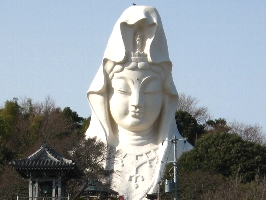
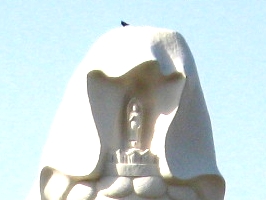
The statue is 25.4 meters high, 18.6 meters wide, and weighs 1,915 tons. An image of Amida (阿弥陀) rests atop the forward part of Kannon's head beneath the hood. A smaller image of this kind is generally called kebutsu (化仏), the image which a Buddha manifests in order to save sentient beings.
The projection on the forehead, called byakugo (白毫), is to give light to every corner of the world. The necklace-like ornament is called yoraku (瓔珞) in Buddhist terminology.
The inside of the statue is spacious enough to hold memorial services. A one-thirtieth scale model of the statue itself, and another Kannon statue, the main image, made in the Heian period (794-1185/92) are also within.
An annual festival is held on May 18 and memorial services in March and September. Jikodo Hall (慈光堂), halfway down from the huge Kannon statue, houses another statue of Kannon (not open to the public) and is a place for Zen meditation, held once a month.
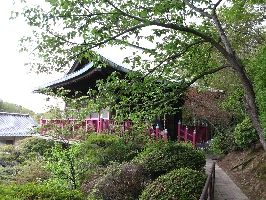
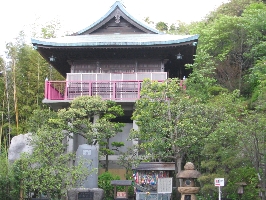
The Main Hall, Shoshinkaku, possesses a pure silver image of Kannon (also not open to public view). To the right are two monuments created to memorialize the atomic bombings, one for the repose of the souls of the bomb victims, another for permanent world peace.
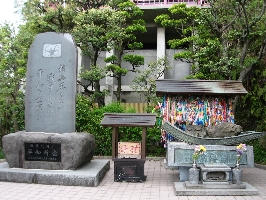
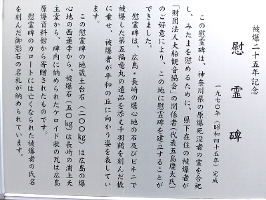
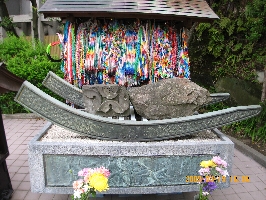
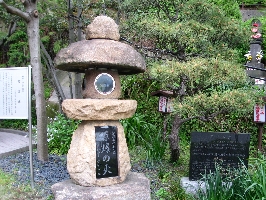
There are also two statues of Jizo, one for child-rearing, the other for protection from evil. The garden produces various kinds of flowers in each season: spiraea, or yukiyanagi (雪柳) early in spring, iris in May and June, and cosmos in October. The top of the hill provides a broad view of the Ofuna area.
| Tamanawa Kubizuka Mound (玉縄首塚) |
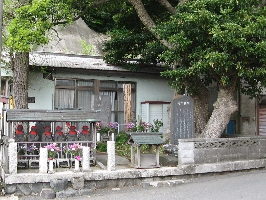
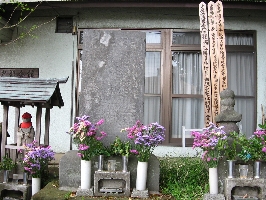
Location: Located close to Tobebashi Bridge (戸部橋), which is some 500 meters southwest from Ofuna Station along the Kashiogawa River (柏尾川).
Story: "Kubizuka" literally means "Head Mound," in this case the buried heads of warriors who died in battles between the Hojo and the Satomi (里見).
When Hojo Ujitoki (北条氏時, ?-1531) was Tamanawa castle lord, the Satomi invaded from Awa (安房, present-day southern part of Chiba Prefecture).
Ujitoki repelled the Satomi, but the battle claimed 35 Hojo followers and far more among the Satomi.
The mound was built in their memory and even now a memorial service is held in mid-August, attended by priests from temples in the neighborhood.
|
Kenritsu Flower Center Ofuna Botanical Garden (more popularly, Ofuna Flower Center) (県立フラワーセンター大船植物園) |
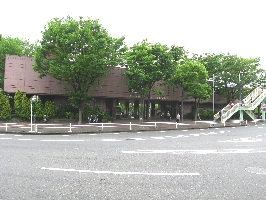
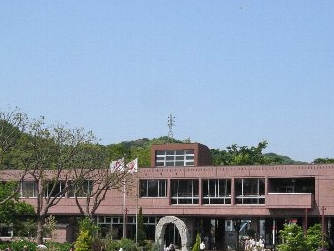
Location: located some 30 meters to the left from the Yagumo Jinjamae crossroads as you walk the street that leads to Kamakura City Hall and Kamakura Station. After passing through a stone torii gate built in 1862 and climbing some 50 stone steps, you will see a shrine hall.
Gropunds: The garden belongs to the Agricultural Policy Department of Kanagawa Prefecture (神奈川県農政部).
Formerly, there was a Prefectural Agricultural Experimental Station (県農業試験場) here whose main purpose was to promote the production of ornamental plants for export. In 1962, the garden was opened to the public.
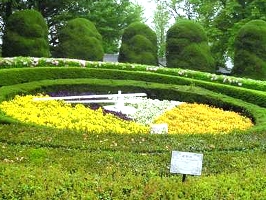
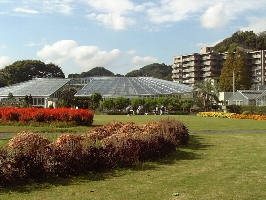
It now features peonies, Japanese iris, azalea, and many other plants and flowers which have been cultivated here. The octagonal green house contains various kinds of tropical plants such as banana trees and cactuses, and Western types of orchids.
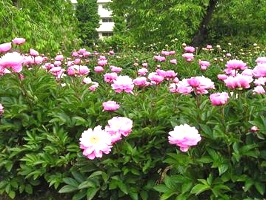
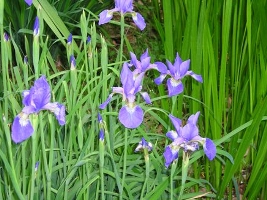
Within the grounds are a flower clock, a pond with water lilies, a Japanese-style garden, as well as gardens for Japanese iris (shobu, 菖蒲), peonies (botan, 牡丹) and rhododendrons (shakunage, 石楠花), and bamboos.
The entire grounds can be enjoyed by strolling from one garden to another, and provide a pleasant place for rest and relaxation for flower fanciers. (Closed Mondays)
Areas: Ueki (植木) and Shiromeguri (城廻)
Place Name
The "ue" in "Ueki" means "to plant," and the "ki" means "tree." The name "Ueki" thus derives from the fact that many trees were planted in this area for the defense of Tamanawa Castle (玉縄城).On the other hand, Shiromeguri has a geographic derivation, since the area surrounded (meguri in Japanese) the castle (shiro) at one time."
| Teisiji Temple (貞宗寺) |
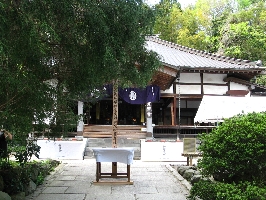
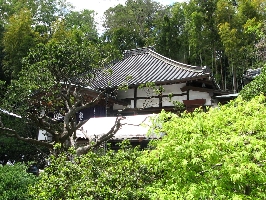
Full name: Tamanawasan (玉縄山) Teisoji
Denomination: Jodo sect (浄土宗)
Location: Close to Ueki Bus Stop when going by bus from Ofuna Station, is tucked away on the hillside a little more than 200 meters to the west from the main road.
History It was founded in 1611 by Gen'ei (源栄), a priest at Daichoji Temple (大長寺), two years after the death of Teiso Ni (貞宗尼).
The temple name, Teisoji, derives from the posthumous name of Teiso Ni (貞宗尼), a nun who was the grandmother of the second Tokugawa Shogun, Hidetada (徳川秀忠, 1579-1632). Actually Teiso Ni was the mother of Oai no Tsubone (お愛の局), who gave birth to Hidetada.
Teiso Ni served in the quarters called Ooku (大奥), literally, "Great Interior" or "Women's Quarters," in Edo Castle as otoshiyori (御年寄), "elder," and later retired here. Two years after her death, the temple was erected in her memory.
Although it once laid claim to a number of large structures, all but the Main Hall were destroyed in the Great Kanto Earthquake of 1923, with only a small number being restored or rebuilt.
Grounds; Because of the above-mentioned connection with the Tokugawa family, the temple displays the Tokugawa crest (three hollyhock leaves in a circle) on the roof ridge of the Main Hall and elsewhere.
Inside the Main Hall is a statue of Amida (阿弥陀) flanked by attendants -- Kannon (観音) and Seishi (勢至) -- and a wooden statue of Teiso Ni.
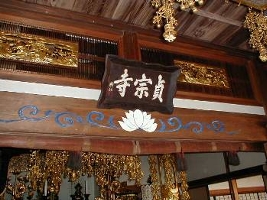
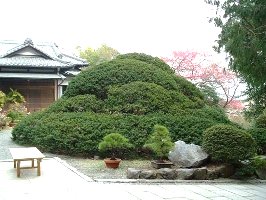
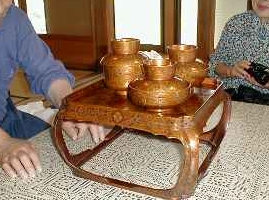 The temple possesses makie (蒔絵) gold-lacquered bowls, and several
Tokugawa family crested trays with legs.
The temple possesses makie (蒔絵) gold-lacquered bowls, and several
Tokugawa family crested trays with legs.
Within the grounds is a wooden structure housing a hokyointo-style (宝篋印塔) tomb said to be for Teiso Ni.
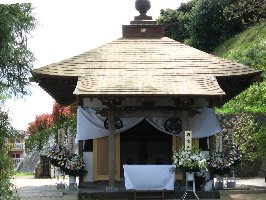
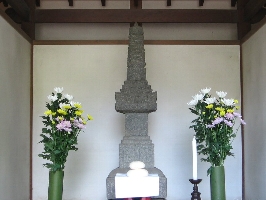
| Enkoji Temple (円光寺) |
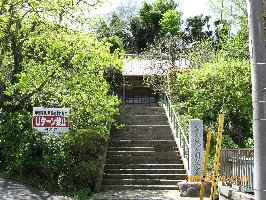
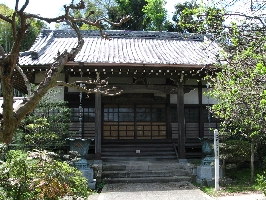
Full name: Jogosan (城護山) Enkoji
Denomination: Shingon sect (真言宗)
Location: The temple can be found at the end of the lane that leads off from the main road some 100 meters west from Ueki Bus Stop.
History: The temple was originally built within the grounds of Tamanawa Castle between 1558 and 1570 by Hojo Ujitoki (北条氏時, ?-1531), who invited Chohan (澄範) as the founding priest.
In 1619 the temple was transferred here when the castle was abandoned.
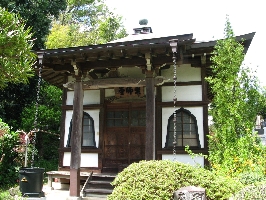
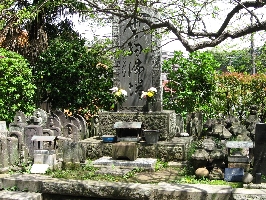
Grounds: The Main Hall houses statues of Fudo Myoo (不動明王), Gakko Bosatsu (月光菩薩), Benzaiten (弁才天), Kobo Daishi (弘法大師), Amida Nyorai (阿弥陀如来), and Bishamonten (毘沙門天).
In Yakushido Hall (薬師堂) next to the Main Hall are statues of Yakushi Nyorai (薬師如来) and attendants: Juni Shinsho (十二神将), "Twelve Guardian Generals." Yakushido Hall is only opened every 60 years.
| Kujoji Temple (久成寺) |
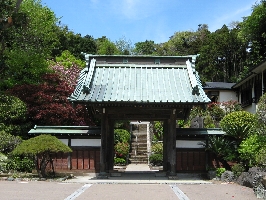
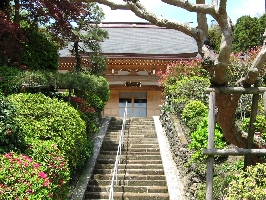
Full name: Koenzan (光円山) Kujoji
Denomination: Nichiren sect (真言宗)
Location: The temple is reached by walking west some 200 meters along the road from Enkoji Temple.
History: The temple was created in 1520 (永正十七年) by Umeda Hidenaga (梅田 秀長), inviting 日舜 (Nisshun) as the founding priest. Hidenaga was a retainer of Hojo clan in Odawara and an ardent believer in the Nichiren sect of Buddhism.
In the Edo priod, the temple prospered, but the fire of 1822 burned down the halls completely. The present halls are rather new.
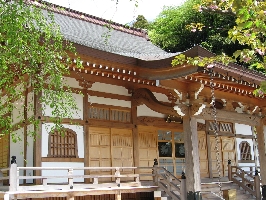
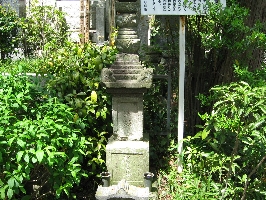
Grounds Because of its connection with Tokugawa Ieyasu (徳川家康, 1542-1616), the temple uses a crest with three hollyhock leaves in a circle, the same as the Tokugawa family.
In the center of the Main Hall are sambo-soshi (三宝祖師) and many other statues, including Nichiren and Kishimojin (鬼子母神). The temple treasures are a "picnic container," called kocho (行厨) or wariko (割子), with the Tokugawa family crest, presented by Tokugawa Ieyasu; a letter with a red seal given by a Tokugawa shogun; and an itabi-type (板碑) stone tablet inscribed with the era name 嘉元四年 (corresponding to 1306), now on loan to Kamakura Kokuhokan.
Within the courtyard are the tombs of Nagao Sadakage (長尾定景, thirteenth century) and his family. Sadakage is said to have killed Kugyo (公暁, 1200-19) soon after Kugyo assassinated the third shogun, Minamoto no Sanetomo (源実朝, 1192-1219) within the grounds of Hachimangu Shrine (八幡宮).
One of Sadakage's descendants is Nagao Kagetora (長尾景虎), a.k.a. Uesugi Kenshin (上杉謙信, 1530-78), a powerful daimyo in the Sengoku period (1467-1590) who dominated Echigo (越後, present-day Niigata Prefecture). His struggle againstTakeda Shingen (武田信玄, 1521-73) for supremacy is well-known in our history.
| Ryuhoji Temple (龍宝寺) |
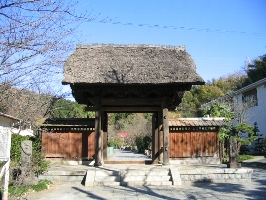
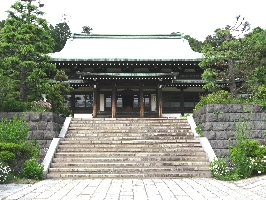
Full name: Yokokusan (陽谷山) Ryuhoji
Denomination: Soto Zen sect (曹洞宗)
Location: located on the right side of the road after passing through the tunnel that is north of Ofuna Botanical Garden.
History; The founding of the temple dates back to the construction of a temple called Zuikoin (瑞光院) at Sankyo (山居, present-day grounds of Eiko Gakuen School, 栄光学園) between 1532 and 1555 by the second Tamanawa castle lord, Hojo Tsunashige (北條綱成, 1515-87).
In 1575, the fourth castle lord, Ujikatsu (氏勝, 1559-1611), relocated the temple to the present site for the repose of the soul of Hojo Ujishige (氏繁), the third castle lord. He also renamed it Ryuhoji, taking it from the posthumous name of Ujishige: 龍宝寺殿大応栄公大居士, Ryuhojiden-Daioeiko-Daikoji.
The temple, with seven major halls and a large tract of land, prospered during those years.
In 1590, when Odawara Castle in Odawara was besieged by the forces of Toyotomi Hideyoshi (豊臣秀吉, 1537-98) in the last stage of his campaign to unify the country, Tamanawa Castle, one of the branch castles of Odawara, also underwent heavy attack, but Ujikatsu and his men would not surrender, entrenching themselves in the castle.
At that time, Ryotatsu (良達), a priest from this temple, entered the castle as an envoy at the request of Tokugawa Ieyasu, and persuaded Ujikatsu to surrender. Thus, the priest and the temple itself came to be thought highly of by warriors in this area. Ujikatsu subsequently became a vassal of Ieyasu and was given land at Tomisato (富里) in present-day Chiba Prefecture.
The temple structures, except for the Sammon Gate and belfry, burned down in 1951. Afterwards, the Main Hall was reconstructed based on a plan drawn by a Dr. Omori Minoru(大岡実).
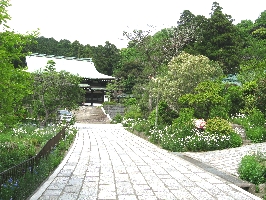
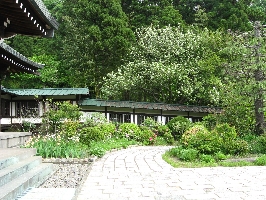
Grounds: When you enter the premises, you will see on raised ground a thatched Sammon Gate built in the Genroku era (元禄, 1688-1704).
To the left is a guidepost and beside the gate is a stone monument with the characters 禁葷酒 (kin-kunshu), warning that those who have sake or garlic on their breath are not allowed to enter.
If you continue further on the approach, the Main Hall will come into sight at the top of the broad stairway. It houses a statue of Shaka Nyorai (釈迦如来, the main image) and attendants -- Monju Bosatsu (文殊菩薩) and Fugen Bosatsu (普賢菩薩) -- as well as the mortuary tablets of successive castle lords and Minamoto no Sanetomo (源実朝, 1192-1219).
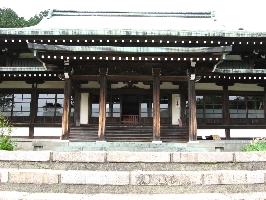
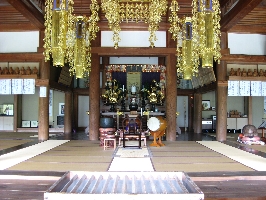
A weathered stone monument in connection with Arai Hakuseki (新井白石, 1657-1725), a Confucian scholar and statesman who heavily influenced the Tokugawa shoguns, stands in a recess to the left of the approach to the Main Hall.
It is supposed that Hakuseki was given a stipend levied from the land at Ueki. The school emblem of Tamanawa Elementary School (玉縄小学校) was modeled after the Arai family crest due to this connection.
In the graveyard on the hillside high above the monument of Hakuseki are numerous tombs of vassals of Matsudaira Masatsuna (松平正綱), who governed the Tamanawa area in the early Edo period (1603-1867).
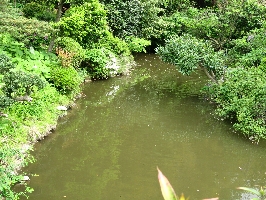
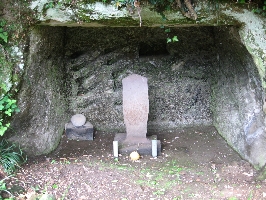
The old farmhouse on the right-hand side of the approach once belonged to a member of the Ishii (石井) family and was moved here from Sekiya (関谷) for preservation. It is designated an Important Cultural Property. Ishii, a local warrior from the sixteenth century, served as a village headman in the Edo period.
The house was built towards the end of the seventeenth century and has a feature typical of farmers' homes in those days: rooms separated by mud-plastered walls, with columns every one ken (間, 1.8 meters). Built with thick walls and only a few doors and small windows, the house is without eaves or verandas. A fumie-usu (踏柄臼) (a kind of long-handled mortar operated by foot) is displayed in front of the house.
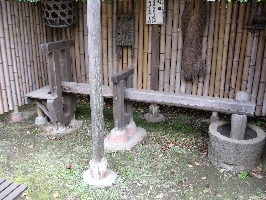
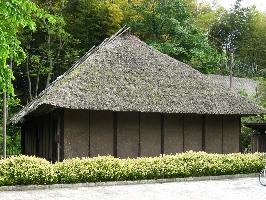
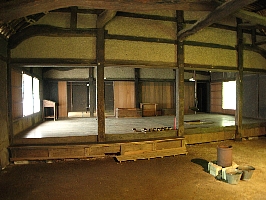
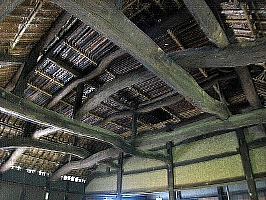
There is also a hall for folk materials, Minzoku Shiryokan (民俗資料館), beyond the swimming pool to the right of the temple approach. The displayed items are Edo period furniture and utensils for daily use. Permission to visit must be obtained in advance.
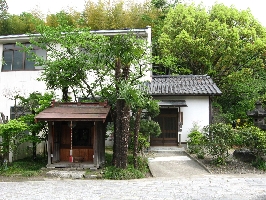
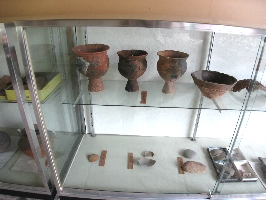
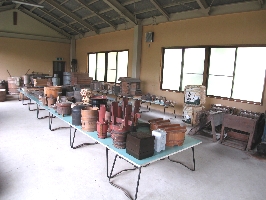
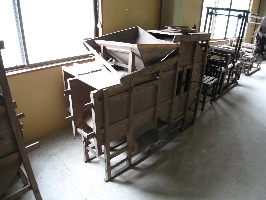
To the left of the approach are some koshinto-type (庚申塔) stone monuments, one with the inscription 寛文八年 (corresponding to 1668) and a stone guidepost set here in the Edo period.
| Suwa Jinja Shrine (諏訪神社) |
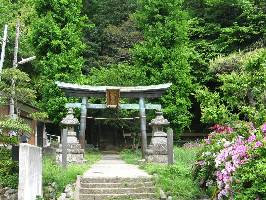
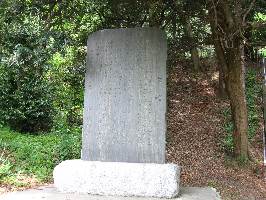
Location; To reach Suwa Jinja Shrine, walk north along the road running in front of Ryuhoji temple, pass the traffic lights at Suwa Jinja Mae (諏訪神社前), and take the lane to the right just before the pedestrian overpass at Ueki (植木). a coppered torii a little ahead and the shrine office to its left are imediately seen.
Histroty and Grounds: In 1619, vilagers around this area moved the shrine here from the Tamanawa Castle grounds after it was demolished.
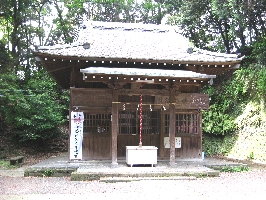
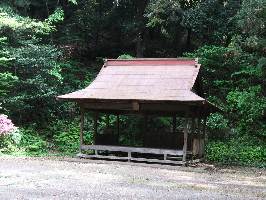
The characters "諏訪 御霊両大神", Suwa Goryo Ryo-Omikami are written on the torii. Pass under it and you will come to the end of the approach, where you will see a large stone monument that explains the history of this shrine.
Two accesses to the Main Hall on the hillside are possible. One is via a steep flight of steps in the center and the other is a paved slope on the left.
The grounds are located on a quiet hillside and are surrounded by tall trees. To the left is the Main Hall and to the right is a hall for sacred dancing, Kaguraden (神楽殿). The two structures face each other.
The shrine is dedicated to Takeminakata no Kami (建御名方神), the god of war, and to the spirit of Kamakura Gongoro Kagemasa (鎌倉権五郎景正), a brave warrior in the eleventh century). The shrine has always been a guardian deity of the Ueki, Oakmoto, and Shiromeguri areas.
| The Former Site of Tamanawa Castle (玉縄城跡) |
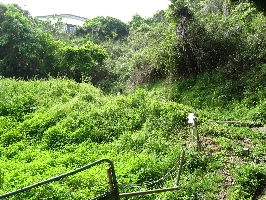
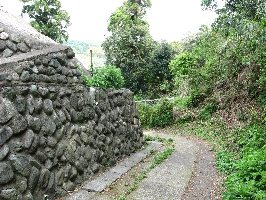
Location and Grounds: Tamanawa Castle was 1.5 kilometers northwest of JR Ofuna Station.
The present grounds of Seisen Jogakuin (清泉女学院) were once the center of Tamanawa Castle, which was called Shiroyama (城山). The section now occupied by the school buildings was the former site of the grounds of the main enclosure of the castle, hommaru-hiraba (本丸平場).
A small hill, called Suwadan (諏訪壇), on the southeast side of the school grounds, 80 meters above sea level, is where Suwajinja Shrine (諏訪神社), the guardian deity of the castle, was once located.
History: It covered a rather wide area, including Ueki, Uchikoshi (打越), and Sekiya. Its fortresses, as sub-castles, were located in Nagaodai (長尾台), Daigiri (大鋸), Takaya (高谷), and Watauchi (渡内).
The castle was one of three reputedly impregnable castles, the other two being Edo Castle, and Kawagoe Castle (川越城) in present-day Saitama Prefecture.
Tamanawa Castle is classified as a mountain fortress or mountain castle (yamajiro, 山城).
In the medieval period, castles were built atop mountains or hills. They relied on the defensive features of the terrain itself and did not have the donjons that are seen in a typical castle today.
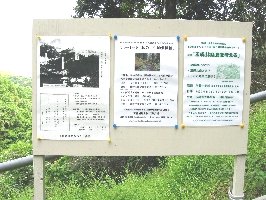
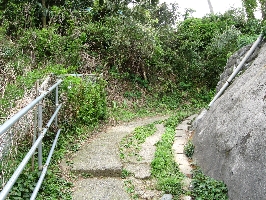
Hojo Soun (北条早雲, 1432-1519) built this castle in 1512 as a branch castle of Odawara Castle for the control of the Miura Peninsula, which he was able to bring about by defeating Miura Dosun (三浦道寸) in Miura.
Later, Soun made his eldest son, Ujitsuna (氏綱, 1487-1541), lord of Odawara Castle, and his second son, Ujitoki(氏時), lord of Tamanawa Castle.
In 1526, when the Satomi (里見) in Boshu (房州, or Awa, now the southern part of Chiba Prefecture) invaded Kamakura, Ujitoki met the enemy at the Tobegawa (戸部川, now Kashiogawa, 柏尾川) River.
The battle claimed many warriors, whose heads were then buried near the Kashiogawa River, and a mound, Tamanawa Kubizuka (玉縄首塚), was built in memory of the dead.
Six statues of Jizo and a thick Chinese hackberry (enoki, 榎) commemorate the battle. The second lord of Tamanawa Castle was Tsunashige (綱成, 1515-87), the adopted son of Ujitsuna.
Reputedly a matchless warrior, when on the battlefield he was always at the head of his forces wearing a yellow banner on his back, with the characters "八幡大菩薩," hachiman-daibosatsu written on it. His men were similarly outfitted. Once the yellow banners appeared, it is said, no enemy could block them and no castle could defend itself.
Thus, his forces, called Ki-Hachiman (黄八幡), were held in terror. The fact that the large forces of Uesugi Kenshin eventually had to give up after attacking the castle in 1560 is a clear indication of the castle's impregnability.
Uesugi Kenshin was one of the influential daimyo (大名) of the Sengoku (1467-1590) and Azuchi-Momoyama periods (1573-1603). Kenshin, first called Nagao Kagetora (長尾景虎), succeeded to the Uesugi family and the position of Kanto kanrei in 1552 when Uesugi Norimasa (上杉憲政, 1523-79), the then Kanto kanrei, after being defeated by the Hojo in Odawara, sought Kenshin's protection in return for the two positions.
In 1560, Kenshin, together with Norimasa, set out from Niigata to fight against the Hojo in Odawara. After attacking Odawara Castle, he then turned his attention to Tamanawa Castle on his way back to his domain. However, because of its unyielding defense, Kenshin was forced to give up, although during the long campaign he paid a visit to Hachimangu Shrine, became the head of the Yamanouchi Uesugi (山ノ内上杉) and gained the post of Kanto kanrei (関東管領).
Kenshin, (his final name after taking Buddhist vows), then assumed the name Uesugi Masatora (上杉政虎), and later Terutora (輝虎). Hojo Ujishige (北条氏繁) became the third lord of Tamanawa Castle and was succeeded in turn by Ujikatsu (氏勝).
In October of 1589, Toyotomi Hideyoshi, in the final stage of his attempt to unify the country, attacked Odawara Castle and ordered Ieyasu (then Hideyoshi's most powerful vassal) to capture Tamanawa Castle.
Ieyasu and Ujikatsu knew each other, and Ieyasu was well aware of how brave Ujikatsu was. He therefore sent a secret envoy to Ujikatsu with a message to surrender, but this was rejected. Some six months later, Ieyasu devised a plan to send another type of messenger and asked Ryotatsu (良達), a priest from Ryuhoji Temple, and Genei (源栄), a priest from Daichoji Temple, to be the carriers.
In April of 1590, Ujikatsu finally surrendered, emerging from the castle after first having taken the tonsure as a sign of renouncing the world.
The letter issued by Hideyoshi on this occasion, complete with a red seal is even now kept by the Tomioka (富岡) family, who live in Ofuna.
Later, the castle came under the jurisdiction of Mizuno Tadamori (水野忠守), but was destroyed in the early Edo period.
| The Structure of the Tamanawa Castle Site (玉縄城跡の構造) |
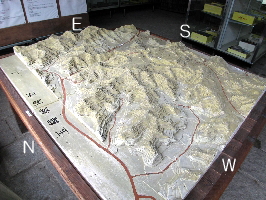
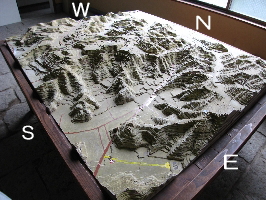
Tamanawa Castle differed from castles built in later years in that it did not have a donjon and high stone walls. It is classified as a so-called mountain fortress, which generally takes advantage of the geographical features of a strategically selected area.
Dry ditches and other such structures as earthworks were added here to fortify the defenses. The site is a good example of a mountain fortress, although most of the original castle has been lost due to the construction of a school.
Among the traces that remain are:
1. The site of the keep (hommaru, 本丸)
The keep, the most protected part of the castle, was located on the present-day school grounds.
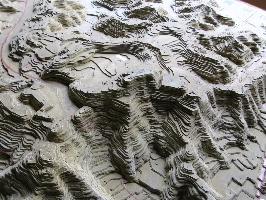
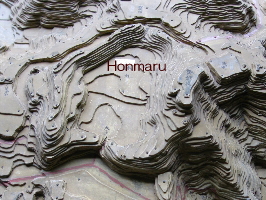
2. Suwadan (諏訪壇)
East of the keep is the earthwork called Suwadan, which retains its original condition rather well and is the highest point of the castle. The top has a flat ground, 30 meters long, 15 meters wide, and an artificial cliff some two meters high at one end. The Suwadan is the last line of defense, where castle lords entrenched themselves.
The guardian deity of the castle was also enshrined there. The ground now offers a panoramic view overlooking Ofuna Station and its neighboring area, as well as the Kashio River.
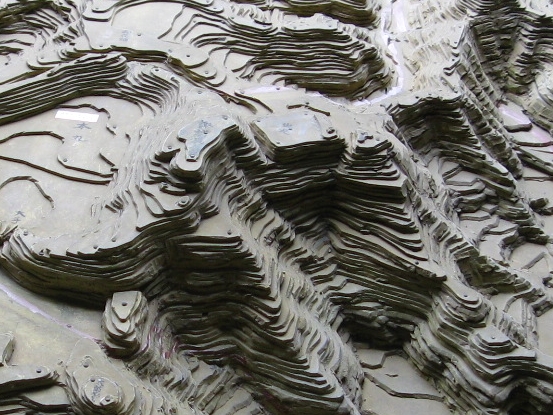
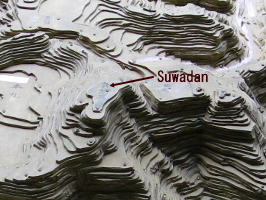
3. Nanamagari no Kuruwa (七曲の曲輪), Ensho-Kuruwa (煙硝曲輪) and Taiko-Yagura (太鼓やぐら)
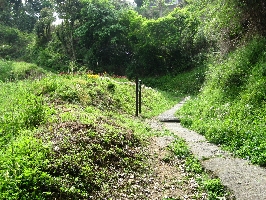
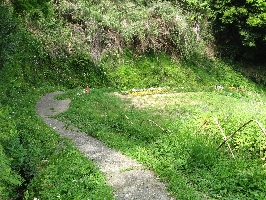
Location: The slope lies on the south side of the hill, which is located 500 meters north of Teisoji and Enkoji Temples.
Generally, the term "nanamagari" refers to a road, path, or slope with seven or more turns within a short distance. Here, the slope is steep and has many turns, hence the name, Nanamagari Slope.
The slope was artificially made steep in order to form the first line of defense for the center of the castle.
On both sides of the top of the slope are earthworks for defense against enemies coming up. Inside are flattened grounds for defenders and stockpiles of weapons.
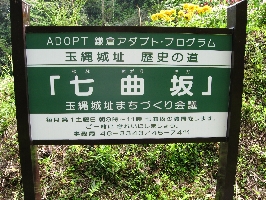
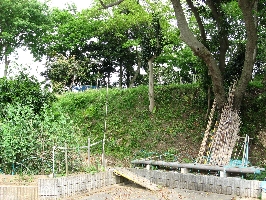
The grounds on the right (as you face south from the top of the slope) are called Ensho-Yagura (えんしょうやぐら), corrupted from Ensho-Kuruwa (煙硝曲輪), literally, "Enclosed Area for Gunpowder."
The left side is called Taiko-Yagura (太鼓やぐら), literally, "Drum Rest," where a drum to signal events and warn against attack was kept. This slope was the front entrance to Tamanawa Castle and this lay of the land made the castle impregnable.
